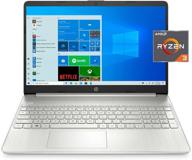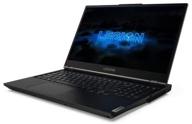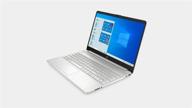
Review on 🐝 BeeLink Pro: Unleash the Power of AMD in a Fingerprint-enabled Computer by Bobby Blanton

Early Review Update [UPDATED]
------------ WINDOWS 11 COMPATIBILITY UPDATE: Earlier this week I ran a system update for Windows and the updater has informed me that my system was not compatible with Win11. Provoke brief moments of anger/panic/confusion. I reinstalled the new PC Health Tool that Microsoft is releasing to run a compatibility test. It came back as ok to update. Today Windows Update started rolling out an update for Windows 11 (offered as an optional update since I'm enrolled in the Windows Insider program in the Early Access channel). So if you get a Windows Update message indicating an incompatibility, it's probably inaccurate and you can relax. A screenshot of the results is attached to this review. ----------- ENABLE TPM2.0: For those interested in BIOS changes for compatibility, here's what I did to enable TPM. Before you continue messing around with your system's BIOS, remember that you can mess things up. There is a CLR CMOS button on the computer that should fix any obvious errors, but any problems you cause are yours. Begin pressing <ESC> or <DEL> immediately after powering on, as the default delay is fairly short. From the main BIOS screen, use the arrow keys to navigate to the Advanced tab at the top, which should be highlighted in white. Mark the top item "Trusted Computing". Press ENTER to go to the TPM20 screen. On the top line, Security Device Support, press Enter and select the Enable option. Press F4 to save and exit, which restarts the computer. After the restart, press <ESC> or <DEL> again. This time you want to go back to the Advanced tab and select AMD fTPM Configuration just below the Trusted Computing you are currently using. This gives you the option to select the TPM mode. The options available here are AMD CPU fTPM, Disabled, or Enable Motherboard TPM. I'm using the AMD module with no problems, but the motherboard module (SPI) should work as well. Once you've selected your TPM, press F4 again to save and exit, and your PC should now restart into Windows as usual. That's all. ---------- ORIGINAL REVIEW This is my first review impression, I got my system yesterday and set it up. I'll update it if I encounter any issues that contradict or reinforce my first impressions. I paid for the device myself and received no compensation or incentives from the seller/manufacturer. This rating only reflects my experience. First of all, it is intended to replace my main laptop as my personal workspace at home. The laptop it replaces was purchased in 2013 and had similar specs in terms of processor, memory, and storage, but was not eligible for the Windows 11 upgrade. I made the change to add a little more future proofing and a modest performance boost. For Windows 11 issues, this system is eligible for an upgrade to Windows 11 according to the update tool released by Microsoft. However, by default the TPM module is not enabled (at least in my case). You need to enter the BIOS at boot time and enable it. The BIOS reports the module as TPM v3.36. Once activated, a Windows tool (from Microsoft) will tell you that the system is eligible for an upgrade. I continue checking. It was well packaged with adequate protection and included a few accessories. It comes with a power adapter with a built in cord which is a bit short but more than adequate for my application. Also included were 2 HDMI cables, one 10-12 inches long and the other about 24 inches long. When mounting to VESA mounts on your monitor, this should be sufficient. A small mounting plate (screws included) attaches to 2 of the 4 VESA mounting points on the monitor (I don't use any). Also included were some internal components, a small ribbon cable labeled "GTI-SATA" and a small circuit board with a SATA connector for a 2.5" SATA SSD/HDD. A small circuit board connects to the motherboard, but there is a metal plate to mount the drive, which I don't intend to do (there is another connected "GTI-SATA" inside as well). Looking inside, removing the mounting plate gives access to the M.2 slots and SO-DIMM slots. The M.2 slots are for (1) NVMe and (1) M.2 SATA. The NVMe slot is occupied by an NVMe SSD, which Windows shows as 512GB (I haven't removed it yet to verify the make or model). Memory - via 2 SO-DIMM slots (marked for DDR4 2400MHz modules). I have 2 Crucial modules of 8GB each. I plan to add 1TB to the open M.2 SATA slot and replace the storage with (2) 16GB SO-DIMMs. The installation was no different than a typical Windows 10 installation from a recovery disk or similar. I didn't get the "Finder's International" screens that others commented, and no malware was found (besides the typical things Microsoft puts in retail images). I set up a local account first and ran all windows updates before booting into my main user account. When I added all the applications I needed and some peripheral drivers, all I saw was a vanilla build of Windows. In terms of performance, one of the main features I wanted was improved graphics support. I do CAD design and 3D modeling for my hobby projects, which has been a headache for me with the integrated graphics hardware on my laptop (integrated Intel i7 chipset). After tweaking Fusion 360, all performance warnings were gone and viewport navigation was smooth and fluid, with no stuttering or lag that I've experienced before. I have yet to render the model, but will do so this weekend and amend this section if performance doesn't improve similarly. A note on memory, however, is that the AMD Radeon graphics reserves 2GB on this system. System memory to use it, so by default the system only has 14GB available for Windows. That's one of the reasons why I plan to upgrade the memory. Also, the memory clock speed is slightly lower than discrete graphics solutions, but at this price point and in this form factor, it's an acceptable trade-off. There may be ways to tweak these settings, but I haven't looked into that yet. Haven't tried playing local games yet, mainly because I've been using Stadia (quite happily) for the last 9 months. While the streaming game is less resource intensive, it does have heavy network demands that this computer can handle without any problems. This is an area I'll try to update when I have time, but with this chipset, gaming is hardly a priority or an area where high performance can be expected. Overall I'm very happy with the purchase and I didn't see any of the initial issues that led to complaints from others. As with anything, YMMV, but my experience has been positive.
- Wide Choice
- Senior Citizen
New products
Comments (0)
Top products in 💻 Desktops
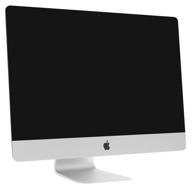
27" Apple iMac All-in-One (Retina 5K, Mid 2020) MXWT2RU/A, 5120x2880, Intel Core i5 3.1GHz, 8GB RAM, 256GB SSD, AMD Radeon Pro 5300, MacOS, Silver

13 Review

🖥️ Dell Optiplex 990 Tower Business Desktop Computer: Intel Quad Core i5, 8GB RAM, 500GB HDD, Windows 10 Pro (Renewed)

12 Review
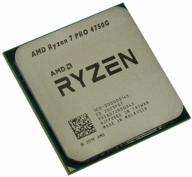
Processor AMD Ryzen 7 PRO 4750G AM4, 8 x 3600 MHz, OEM

11 Review

Refurbished 2019 Apple iMac with Retina 4K/3.6 GHz Intel Core i3 🖥️ Quad-Core (21.5-Inch, 8GB RAM, 1TB) - Silver: Ultimate Deal on a Powerful Renewed Desktop!

13 Review


